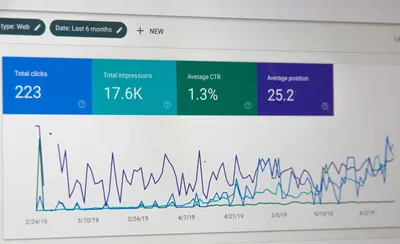🔐 AlmaLinux File Permissions: Complete Security & Access Control Guide
Welcome to the fascinating world of file permissions on AlmaLinux! 🎉 Think of file permissions as the security guards of your digital world - they decide who can enter which rooms, what they can touch, and what they can do! Whether you’re protecting sensitive documents, sharing files with your team, or securing your server, mastering file permissions is absolutely essential! 🛡️
File permissions might look like mysterious codes at first, but they’re actually quite logical and powerful! 💪 From understanding basic read/write/execute permissions to implementing advanced security controls, we’ll learn everything step by step. Get ready to become a security expert and create bulletproof file systems that protect your data! ✨
🤔 Why are File Permissions Important?
File permissions are the foundation of Linux security! Here’s why you should master them:
- 🛡️ Data Protection: Keep sensitive files safe from unauthorized access
- 🎯 Access Control: Give users exactly the access they need, nothing more
- 🔐 System Security: Prevent malicious users from damaging your system
- 👥 Multi-User Environments: Safely share systems among multiple users
- 📊 Compliance: Meet security standards and regulatory requirements
- 🚫 Prevent Accidents: Stop users from accidentally deleting important files
- ⚡ Performance: Control who can execute programs and scripts
- 🎭 Role-Based Security: Implement different access levels for different roles
🎯 What You Need
Before we start working with permissions, make sure you have:
✅ AlmaLinux 8 or 9 installed and running ✅ User account with sudo access to change file permissions ✅ Basic terminal knowledge (cd, ls, cat commands) ✅ Understanding of users and groups (helpful but we’ll review) ✅ Text editor familiarity (nano, vim, or gedit) ✅ Some files and directories to practice with ✅ Curiosity about security and how permissions work!
📝 Understanding Permission Basics
Let’s start by understanding how permissions work! 🎓
Reading Permission Display
# List files with detailed permissions
ls -l
# Output: Shows permissions like: -rw-r--r-- 1 user group 1234 date filename
# Understanding the permission format:
# -rw-r--r--
# |||||||||
# ||||||||└─ Others execute permission
# |||||||└── Others write permission
# ||||||└─── Others read permission
# |||||└──── Group execute permission
# ||||└───── Group write permission
# |||└────── Group read permission
# ||└─────── Owner execute permission
# |└──────── Owner write permission
# └───────── Owner read permission
# First character indicates file type:
# - = regular file, d = directory, l = symbolic linkPermission Values and Meanings
# Check permissions of important system files
ls -l /etc/passwd
# Output: -rw-r--r-- (644) - readable by all, writable by owner only
ls -l /etc/shadow
# Output: ---------- (000) - accessible only by root
ls -ld /home/
# Output: drwxr-xr-x (755) - directory, owner has full access, others can read/execute
# Understanding permission meanings:
# r (read) = 4: Can view file contents or list directory contents
# w (write) = 2: Can modify file or create/delete files in directory
# x (execute) = 1: Can run file as program or enter directory🔧 Using chmod Command
Symbolic Permission Changes
# Create test files for practice
touch test1.txt test2.txt
mkdir test_directory
# Add permissions using symbolic notation
chmod u+x test1.txt
# Output: Adds execute permission for user (owner)
chmod g+w test2.txt
# Output: Adds write permission for group
chmod o+r test_directory
# Output: Adds read permission for others
# Remove permissions
chmod u-w test1.txt
# Output: Removes write permission for user
chmod g-x,o-x test_directory
# Output: Removes execute permission for group and others
# Set specific permissions
chmod u=rw,g=r,o= test1.txt
# Output: User gets read/write, group gets read, others get nothingNumeric Permission Changes
# Set permissions using numeric notation
chmod 755 test1.txt
# Output: Sets rwxr-xr-x (user: rwx=7, group: r-x=5, others: r-x=5)
chmod 644 test2.txt
# Output: Sets rw-r--r-- (user: rw-=6, group: r--=4, others: r--=4)
chmod 600 secret.txt
# Output: Sets rw------- (user: rw-=6, group: ---=0, others: ---=0)
# Common permission combinations:
chmod 777 file.txt # rwxrwxrwx - full access for everyone (dangerous!)
chmod 755 script.sh # rwxr-xr-x - executable for all, writable by owner
chmod 644 document.txt # rw-r--r-- - readable by all, writable by owner
chmod 600 private.txt # rw------- - accessible only by ownerRecursive Permission Changes
# Create directory structure for testing
mkdir -p test_project/{src,docs,config}
touch test_project/src/main.c
touch test_project/docs/readme.txt
touch test_project/config/settings.conf
# Change permissions recursively
chmod -R 755 test_project/
# Output: Sets 755 permissions for directory and all contents
# Set different permissions for files vs directories
find test_project -type f -exec chmod 644 {} \;
find test_project -type d -exec chmod 755 {} \;
# Output: Files get 644, directories get 755
# Verify the changes
ls -la test_project/
ls -la test_project/src/
# Output: Shows permissions for directories and files🌟 Using chown Command
Changing File Ownership
# Create test files
touch ownership_test.txt
mkdir ownership_directory
# Change owner only
sudo chown alice ownership_test.txt
# Output: Changes owner to alice
# Change owner and group
sudo chown bob:developers ownership_test.txt
# Output: Changes owner to bob and group to developers
# Change group only
sudo chown :admins ownership_directory
# Output: Changes group to admins, keeps current owner
# Verify ownership changes
ls -l ownership_test.txt ownership_directory
# Output: Shows new ownership informationRecursive Ownership Changes
# Create project structure
mkdir -p project/{web,database,logs}
touch project/web/index.html
touch project/database/schema.sql
touch project/logs/access.log
# Change ownership recursively
sudo chown -R webuser:webgroup project/web/
sudo chown -R dbuser:dbgroup project/database/
sudo chown -R loguser:loggroup project/logs/
# Set different ownership for different parts
sudo chown -R alice:developers project/
sudo chown root:root project/logs/
# Output: Alice owns project, but root owns logs
# Verify recursive changes
ls -la project/
ls -la project/web/
# Output: Shows ownership for all directories and files✅ Special Permissions
Setuid, Setgid, and Sticky Bit
# Understanding special permissions:
# Setuid (4): Run with owner's permissions
# Setgid (2): Run with group's permissions (files) or inherit group (directories)
# Sticky bit (1): Only owner can delete files in directory
# View special permissions in action
ls -l /usr/bin/passwd
# Output: -rwsr-xr-x (setuid bit allows password changes)
ls -ld /tmp
# Output: drwxrwxrwt (sticky bit prevents users from deleting others' files)
# Set special permissions
chmod 4755 test_script.sh
# Output: Sets setuid bit (runs as owner)
chmod 2755 shared_directory
# Output: Sets setgid bit (files inherit group)
chmod 1755 public_directory
# Output: Sets sticky bit (only owner can delete)
# Set multiple special permissions
chmod 6755 special_file
# Output: Sets both setuid and setgidUsing Special Permissions Practically
# Create shared project directory with setgid
sudo mkdir /shared/team_project
sudo chgrp developers /shared/team_project
sudo chmod 2775 /shared/team_project
# Output: Files created here inherit 'developers' group
# Create public upload directory with sticky bit
sudo mkdir /shared/uploads
sudo chmod 1777 /shared/uploads
# Output: Anyone can upload, but only owners can delete their files
# Test the setgid functionality
touch /shared/team_project/test_file
ls -l /shared/team_project/test_file
# Output: Shows file has 'developers' group automatically
# Verify special permissions display
ls -ld /shared/team_project /shared/uploads
# Output: Shows 's' for setgid and 't' for sticky bit🎮 Quick Examples
Example 1: Web Server File Permissions
# Create web server directory structure
sudo mkdir -p /var/www/{html,logs,conf,backup}
# Set appropriate ownership
sudo chown -R apache:apache /var/www/html
sudo chown -R apache:apache /var/www/logs
sudo chown -R root:apache /var/www/conf
sudo chown -R root:root /var/www/backup
# Set secure permissions
sudo chmod 755 /var/www/html # Web files readable
sudo chmod 644 /var/www/html/*.html # HTML files not executable
sudo chmod 755 /var/www/html/*.cgi # CGI scripts executable
sudo chmod 750 /var/www/logs # Logs accessible to apache group
sudo chmod 640 /var/www/logs/*.log # Log files readable by group
sudo chmod 750 /var/www/conf # Config readable by apache group
sudo chmod 640 /var/www/conf/*.conf # Config files not executable
sudo chmod 700 /var/www/backup # Backup accessible by root only
# Verify web server permissions
ls -la /var/www/
ls -la /var/www/html/
ls -la /var/www/logs/
# Output: Shows secure web server permission structureExample 2: Development Team Shared Directory
# Create development team structure
sudo mkdir -p /development/{projects,tools,documentation}
# Create development groups
sudo groupadd developers
sudo groupadd senior_devs
sudo groupadd project_managers
# Set up shared development directory
sudo chgrp developers /development
sudo chmod 2775 /development
# Output: Setgid ensures new files inherit developers group
# Set up project directories
sudo mkdir -p /development/projects/{project1,project2,shared}
sudo chgrp developers /development/projects/project1
sudo chgrp developers /development/projects/project2
sudo chgrp senior_devs /development/projects/shared
# Set appropriate permissions
sudo chmod 2775 /development/projects/project1 # Team writable
sudo chmod 2775 /development/projects/project2 # Team writable
sudo chmod 2770 /development/projects/shared # Senior devs only
# Set up tools directory (read-only for most)
sudo chmod 755 /development/tools
sudo chmod 644 /development/tools/*
# Set up documentation (writable by project managers)
sudo chgrp project_managers /development/documentation
sudo chmod 2775 /development/documentation
# Test the setup
sudo -u developer1 touch /development/projects/project1/test.c
ls -l /development/projects/project1/test.c
# Output: Shows file has correct group ownershipExample 3: Secure File Server Setup
# Create file server structure
sudo mkdir -p /fileserver/{public,private,shared,admin}
# Create user groups for file access
sudo groupadd file_users
sudo groupadd file_admins
sudo groupadd department_heads
# Set up public directory (read-only for all users)
sudo chown root:file_users /fileserver/public
sudo chmod 755 /fileserver/public
sudo chmod 644 /fileserver/public/*
# Set up private directories for each user
sudo mkdir -p /fileserver/private/{user1,user2,user3}
sudo chown user1:file_users /fileserver/private/user1
sudo chown user2:file_users /fileserver/private/user2
sudo chown user3:file_users /fileserver/private/user3
sudo chmod 700 /fileserver/private/user*
# Set up shared directory with special permissions
sudo chown root:file_users /fileserver/shared
sudo chmod 1777 /fileserver/shared
# Output: Sticky bit prevents users from deleting others' files
# Set up admin directory (admins only)
sudo chown root:file_admins /fileserver/admin
sudo chmod 750 /fileserver/admin
# Create access control script
cat > /usr/local/bin/check_access.sh << 'EOF'
#!/bin/bash
echo "Checking file server access permissions..."
for dir in public private shared admin; do
echo "=== /fileserver/$dir ==="
ls -ld /fileserver/$dir
done
EOF
sudo chmod 755 /usr/local/bin/check_access.sh
/usr/local/bin/check_access.sh
# Output: Shows complete file server permission structure🚨 Fix Common Problems
Problem 1: Permission Denied Errors
Symptoms: Cannot access files or directories you should be able to access
Solution:
# Check current permissions
ls -l problematic_file
ls -ld problematic_directory
# Check your user ID and groups
id
groups
# Check if you're the owner
stat -c "%U %G" problematic_file
# Output: Shows owner and group
# Fix permission if you're the owner
chmod u+r problematic_file # Add read permission
chmod u+w problematic_file # Add write permission
chmod u+x problematic_file # Add execute permission
# If you're not the owner, ask admin to fix it
sudo chown $(whoami) problematic_file
# Or add yourself to the appropriate group
sudo usermod -a -G required_group $(whoami)
# Test access after changes
cat problematic_file
# Output: Should work if permissions are correctProblem 2: Script Won’t Execute
Symptoms: Script exists but cannot be run
Solution:
# Check if script has execute permission
ls -l script.sh
# Output: Should show x in permission string
# Add execute permission
chmod +x script.sh
# Or more specifically:
chmod u+x script.sh # For owner only
chmod 755 script.sh # For everyone
# Check script's shebang line
head -1 script.sh
# Output: Should show #!/bin/bash or similar
# Test script execution
./script.sh
# Output: Script should run
# If still problems, check script ownership
ls -l script.sh
# Make sure you own it or it's executable by your groupProblem 3: Directory Access Issues
Symptoms: Cannot enter or list directory contents
Solution:
# Check directory permissions
ls -ld target_directory
# Output: Shows directory permissions
# For directories, you need execute permission to enter
chmod +x target_directory
# Or more specifically:
chmod 755 target_directory
# To list contents, you need read permission
chmod +r target_directory
# To create files, you need write permission
chmod +w target_directory
# Check parent directory permissions too
ls -ld $(dirname target_directory)
# Output: Parent must also be accessible
# Test directory access
cd target_directory
ls -la
# Output: Should work if permissions are correct
# Common directory permission combinations:
chmod 755 directory # Read, execute for all; write for owner
chmod 750 directory # Read, execute for owner/group; none for others
chmod 700 directory # Full access for owner only📋 Simple Commands Summary
| Command | Purpose | Example |
|---|---|---|
ls -l | View permissions | ls -l file.txt |
chmod | Change permissions | chmod 644 file.txt |
chown | Change ownership | chown user:group file.txt |
chgrp | Change group | chgrp developers file.txt |
umask | Set default permissions | umask 022 |
stat | Detailed file info | stat -c "%a %n" file.txt |
find | Find files by permissions | find . -perm 777 |
getfacl | View ACL permissions | getfacl file.txt |
💡 Tips for Success
Here are proven strategies to master file permissions! 🌟
Best Practices
- 🎯 Principle of Least Privilege: Give minimum permissions needed for functionality
- 📝 Document Permission Schemes: Keep records of why certain permissions are set
- 🔍 Regular Audits: Periodically review file permissions for security
- 🧹 Clean Up: Remove unnecessary permissions and access
- 🛡️ Layer Security: Use multiple security mechanisms together
- 📊 Monitor Changes: Track permission changes for audit trails
- 🔄 Test Thoroughly: Verify permissions work as intended
- ⚡ Automate Common Tasks: Script repetitive permission operations
Security Guidelines
- Never use 777 permissions unless absolutely necessary 🚫
- Protect sensitive files with 600 permissions 🔐
- Use setgid for shared directories to maintain group ownership 👥
- Implement sticky bit on public directories like /tmp 📌
- Regularly check for setuid/setgid files for security 🔍
- Use groups effectively to minimize individual permission management 📊
- Back up permission settings before making major changes 💾
- Test permission changes in non-production environments first 🧪
🏆 What You Learned
Congratulations! You’ve mastered file permissions on AlmaLinux! 🎉 Here’s what you can now do:
✅ Read Permissions: Understand permission displays and their meanings ✅ Set Basic Permissions: Use chmod with both symbolic and numeric notation ✅ Manage Ownership: Change file and directory ownership with chown ✅ Use Special Permissions: Implement setuid, setgid, and sticky bit ✅ Secure Directories: Set up secure directory structures for different use cases ✅ Troubleshoot Access: Diagnose and fix common permission problems ✅ Apply Security Best Practices: Implement secure permission schemes ✅ Automate Permission Management: Use scripts and tools for efficient management
🎯 Why This Matters
Mastering file permissions is essential for Linux security and administration! 🚀 With these skills, you can:
- Protect Sensitive Data: Keep confidential information secure from unauthorized access 🛡️
- Enable Collaboration: Set up shared environments where teams can work safely 👥
- Prevent Security Breaches: Implement defense-in-depth security strategies 🔒
- Meet Compliance Requirements: Satisfy security audits and regulations 📋
- Scale System Administration: Manage permissions efficiently across large systems 📈
- Build Secure Applications: Understand how applications should handle file access 🔧
File permissions are the foundation of Linux security! Whether you’re securing a personal laptop or managing enterprise servers, these skills will protect your data and systems. Remember, security is like an onion - it has layers, and each layer (including permissions) makes the whole system stronger! ⭐
Excellent work on mastering AlmaLinux file permissions! You now have the knowledge to create secure, well-organized systems that protect data while enabling productive collaboration! 🙌




